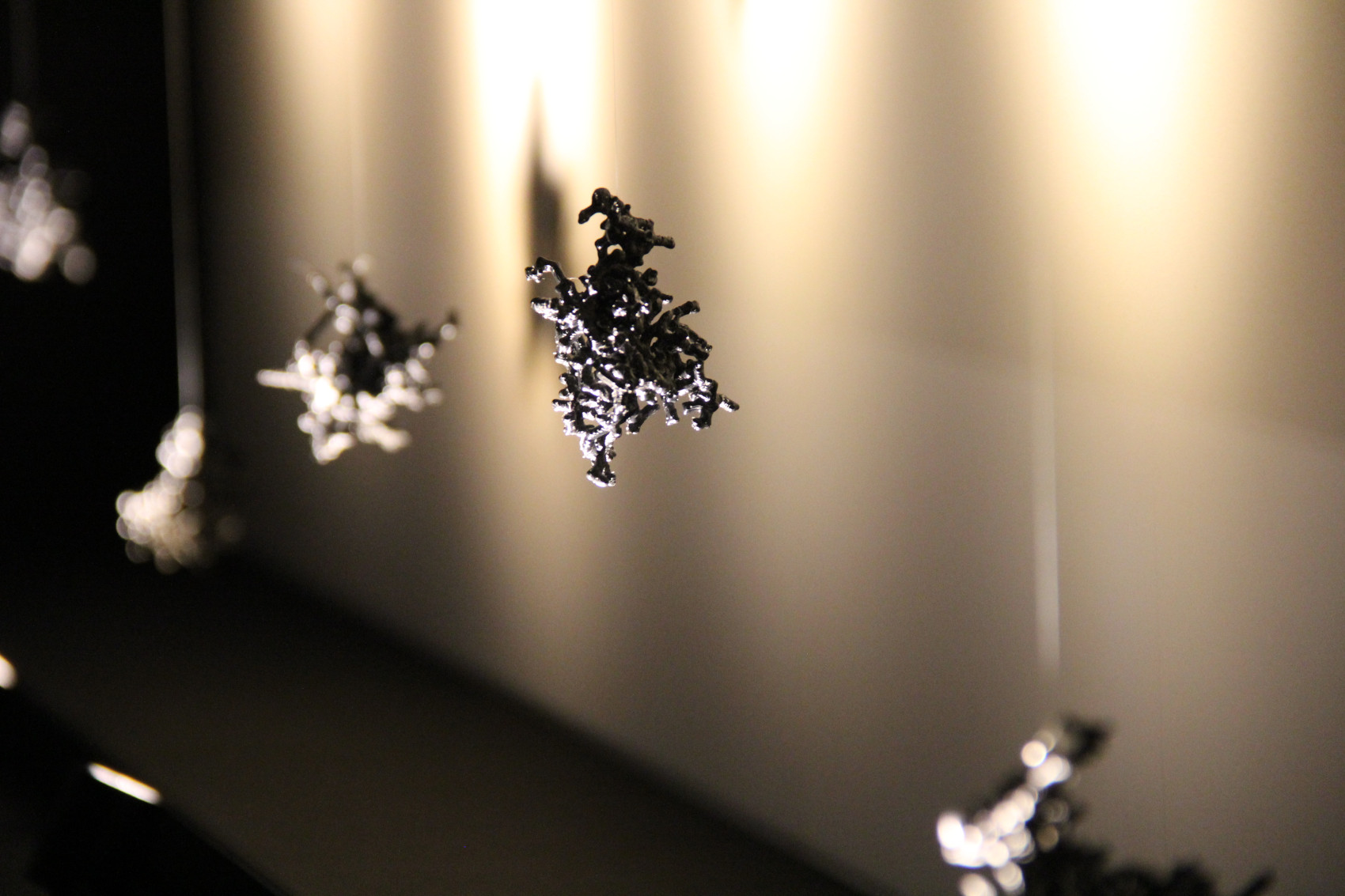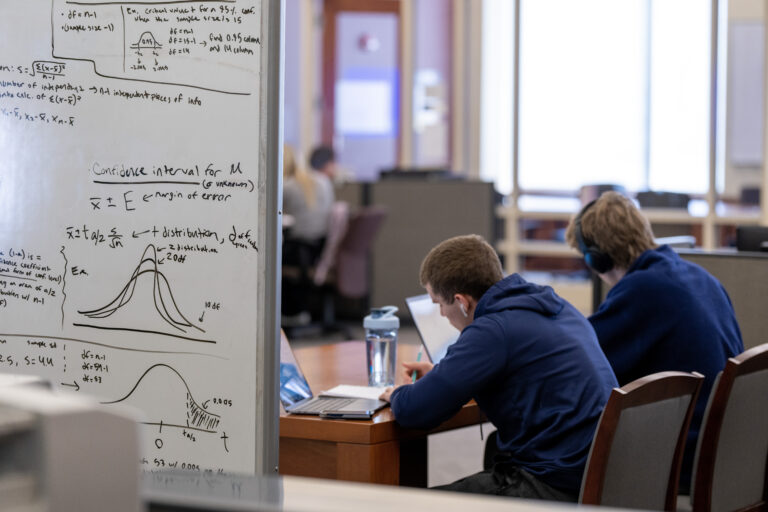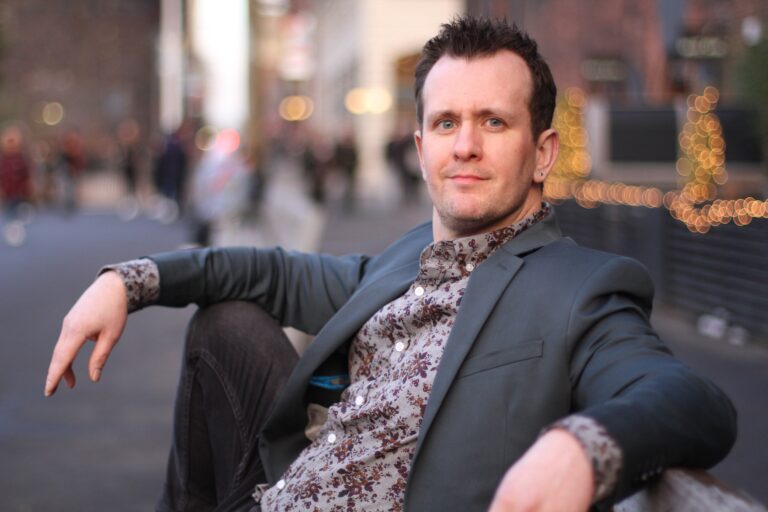Dr. Somesh Roy, assistant professor of mechanical engineering in the Opus College of Engineering, is working together with contemporary artist Tomás Saraceno to showcase the effects of soot emissions through scientific and artistic lenses in a new Haggerty Museum of Art exhibition, Entangled Air.
The National Science Foundation awarded Roy a CAREER grant in February 2022 to study the physics and chemistry of soot, explore better ways to predict soot emissions from combustion systems and increase our understanding of the effects of soot on the planet.
“Soot has been around since the birth of the planet,” Roy says. “It is the black stuff that we see in smoke. We still don’t know a lot about how soot is formed, even when it affects our lives in many ways.”
Roy is now collaborating with the Haggerty Museum of Art, turning his findings into immersive learning opportunities for the Marquette and Milwaukee communities.
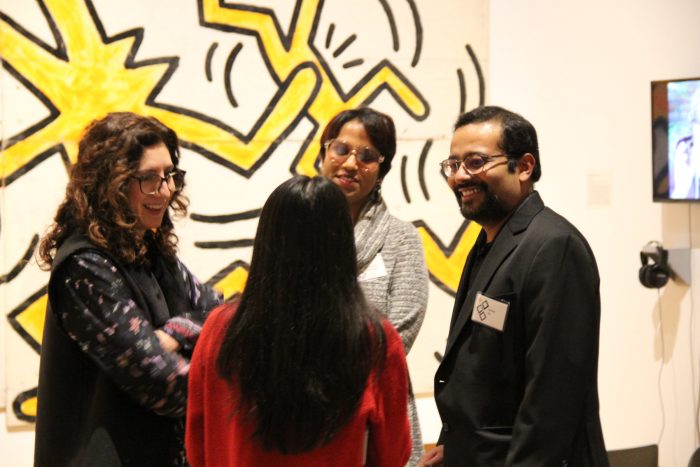
“The Haggerty Museum of Art embraces both academic and artistic experimentation, so when Dr. Roy approached us, we were very excited to work with him,” says Emilia Layden, Haggerty Museum of Art curator of collections and exhibitions.
Through the exhibition’s scientific displays and discussions, Roy aims to educate the public on soot’s negative effects, including climate change. “It is in the air that we all breathe –even when we don’t see any smoke. It is something that we cannot see, and we oftentimes ignore those things that are not visible,” Roy says.
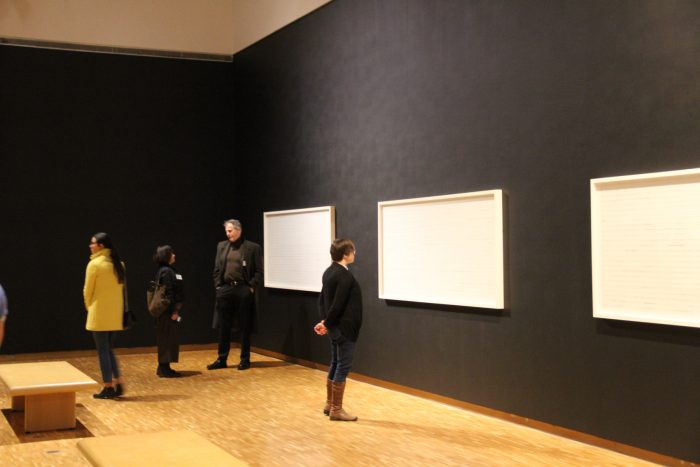
Clearing the air with art
For more than two decades Argentina-born, Berlin-based artist Tomás Saraceno has activated projects aimed towards rethinking the co-creation of the atmosphere with the goal of eliminating carbon emissions.
“He is a well-known artist,” Roy says. “Having an exhibition from him in Milwaukee is a big deal.”
Saraceno’s work featured in Entangled Air is a representation of his decades-long engagement with the invisible air and pollutants.
“The works in the exhibition are quite literally made from air,” Layden says. “This ranges from works made with air ink, to sculptures that fly using only the heat from the sun and soot particles, to an immersive installation that illuminates the otherwise-invisible particulate matter that surrounds us.”
Roy understands that art and science aren’t often thought to go hand in hand but says this exhibition ushers a unique collaboration by bringing perspective of these different disciplines together.
“It ties in well with global and public health, too, which we are all concerned about,” Roy says. “Learning how soot impacts the society is beneficial to anyone and everyone.”
Community outreach and engagement will also be a large part of Entangled Air and Roy’s research. Lectures, workshops and an art history conference are some ways that the community can take their own part in the exhibition.
In-person tours called AirWalks, however, may be one of the most engaging opportunities.
Roy and other team members will host three AirWalks in April and May in the Menomonee River Valley, Pulaski Park and Metcalfe Park.
“Thought partners will lead a dialogue about each neighborhood—with an emphasis on the impacts of industrialization on air quality and public health,” Layden says. “Dr. Roy will provide sensors that will collect air quality data in real time during each AirWalk.”
Sensor readings will be used to create data visualizations that will be displayed in the exhibition.
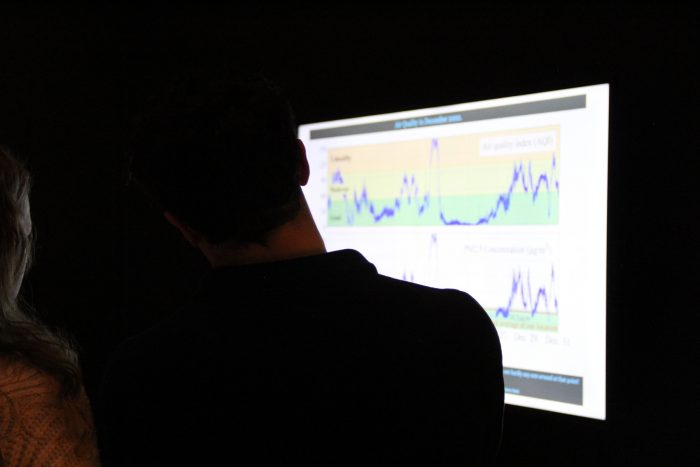
The connection between arts and sciences and the Milwaukee and Marquette communities is what Roy notes as one of the most significant parts of this exhibition.
“It has become a connecting point for a lot of partners from the community,” Roy says. “There is really a synergy and hunger in the community to know about the air quality and to take meaningful actions. I hope that this is only the beginning.”
Related content:
- The Secrets of Soot (Marquette Today, September 16, 2022)
- We Are All Marquette: A Q&A with Haggerty Museum of Art Director Susan Longhenry
- Milwaukee Museum Days at the Haggerty Museum of Art, Jan. 20-29
- ‘J.R.R. Tolkien: The Art of the Manuscript’ opens 19 at Haggerty Museum of Art
